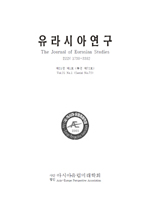- 영문명
- 발행기관
- 아시아.유럽미래학회
- 저자명
- 존프랭클(John M. Frankl)
- 간행물 정보
- 『유라시아연구』제11권 제2호, 1~17쪽, 전체 17쪽
- 주제분류
- 사회과학 > 사회과학일반
- 파일형태
- 발행일자
- 2014.06.30
4,840원
구매일시로부터 72시간 이내에 다운로드 가능합니다.
이 학술논문 정보는 (주)교보문고와 각 발행기관 사이에 저작물 이용 계약이 체결된 것으로, 교보문고를 통해 제공되고 있습니다.

국문 초록
이 글은 한국의 민족 정체성, 민족 언어, 그리고 민족 문학이라는 개념의 역사적 변화를 규명한 논문이다. 한국의 고유문자는 역사가 길지 않으며 한글 발명 이전 대부분의 집필활동은 한문으로 이루어져 왔다. 1443년 드디어 한글이 창제되고 1445년에 반포되었으나, 19세기 말까지는 널리 사용되지 않았다. 그러다 1910년 한일합병 이후 국가가 사라지자 일부 지식인들 사이에 민족을 보존하고 한반도가 다방면으로 겪은 수많은 변화를 정사하려는 시도가 나타나기 시작했다. 특히 문학가들은 영토, 혈통, 그리고 언어 세 가지 요소의 일치가 요구되는 변화된 시대의 흐름 속에서 한국문학의 개념을 새로이 만들어내야 했다. 그 과정에서 언어, 특히 문자적 언어를 이들이 새로이 정립하고자 하는 “한국적 정체성 (Korean- ness)” 에 적용하는데 가장 어려움을 겪었다. 1945년 해방 직후 한국에 팽배했던 반외세적 정서가 자국어 중심주의로 이어져, 수천 년간 2개국어가 당연시되어 온 한국에서도 외국어 배척 경향이 발생했기 때문이다. 그러나 두 세대도 지나지 않은 지금, 한국은 다시 수천 년간 이어 온 전통을 다시 이어나가고 있다. 교육수준이 높은 한국인에게 이중언어 사용은 당연한 것이며 한국문학 역시 그러한 사실을 반영하기 시작했다. 오늘날 젊은 한국 작가들은 영어로 한국문학을 창작해내고 있다. 이는 전혀 새로운 현상이 아니다. 오히려 역사적 관점에서 이 작가들은 이중언어 그리고 이중문화를 유창하게 다루는 자랑스러운 한국의 역사를 이어받은 것이 분명하다.
영문 초록
This article explores the historical shifts in Korean conceptions of national identity, national language, and national literature. For much of Korea’s history, it did not possess a written language, and nearly all writings were composed in literary Chinese. Although the Korean writing system was invented in 1443 and promulgated in 1445, it enjoyed relatively little official usage until the close of the nineteenth century. In the early twentieth century, following the Japanese annexation of Korean in 1910, certain Korean intellectuals simultaneously attempted to preserve a Korean ethnic nation where no Korean political state existed, and to take stock of the immense changes the peninsula had undergone in nearly all spheres of life. Those involved in literature were faced with the task of forging a new definition of Korean literature in a world that now demanded a correspondence among territory, blood, and language. It was language, specifically written language, however, that proved the most recalcitrant to this new nationalist conception of “Korean-ness.” Following Korea’s liberation from Japan in 1945, a somewhat understandably xenophobic monolingualism briefly engulfed a nation in which bilingualism had been the norm for millenia. After little more than a single generation, however, Korea today has returned to where it had been for over a thousand years before: bilingualism is the norm for educated Koreans, and Korean literature is once again beginning to reflect that fact. Today young Korean writers are producing Korean literature in the English language. This is not a truly new development. Rather, when viewed in the context of Korean history as a whole, these writers are the heirs to a long and proud tradition of bilingualism and biculturalism in Korea.
목차
Ⅰ. Introduction
Ⅱ. Removing Korea from Asia
Ⅲ. Blurring the Line between Transplantation and Translation
Ⅲ. Blurring the Line between Translation and Creative Writing
Ⅴ. Blurring the Line between “Korean” and “Foreign”
Ⅵ. Korean Literature Comes Full Circle
Ⅶ. Conclusion
References
키워드
해당간행물 수록 논문
- 1914 vs. 2014: 2014년 동아시아는 1914년 유럽의 재현인가?
- Korean Literature between East Asia and Europe
- 유네스코 창조도시 연구 - 유럽문화수도와 고베의 사례를 중심으로
- 중국식 과두 체제의 변화?: 엘리트 정치 측면에서의 시진핑 집권 초기 평가
- 한-아세안 관광협력의 지속가능성 제고 방안: 교육연수 협력 프로그램을 중심으로
- 중국 ‘사회적 경제’의 민・관(民・官) 상호작용에 관한 연구
- Taking the Long Way Home: Europhilia and Cosmopolitanism as a Critique of Tradition in Yi Hyoseok’s Literature
참고문헌
관련논문
사회과학 > 사회과학일반분야 BEST
- AI와 디지털 문화 산업의 결합에서 저작권 및 윤리적 규범 준수의 필요성 연구
- 종합병원 간호사의 환자안전문화인식과 조직의사소통만족이 안전간호활동에 미치는 영향
- 임상간호사의 환자안전간호활동에 영향을 미치는 요인
사회과학 > 사회과학일반분야 NEW
더보기최근 이용한 논문
교보eBook 첫 방문을 환영 합니다!

신규가입 혜택 지급이 완료 되었습니다.
바로 사용 가능한 교보e캐시 1,000원 (유효기간 7일)
지금 바로 교보eBook의 다양한 콘텐츠를 이용해 보세요!




